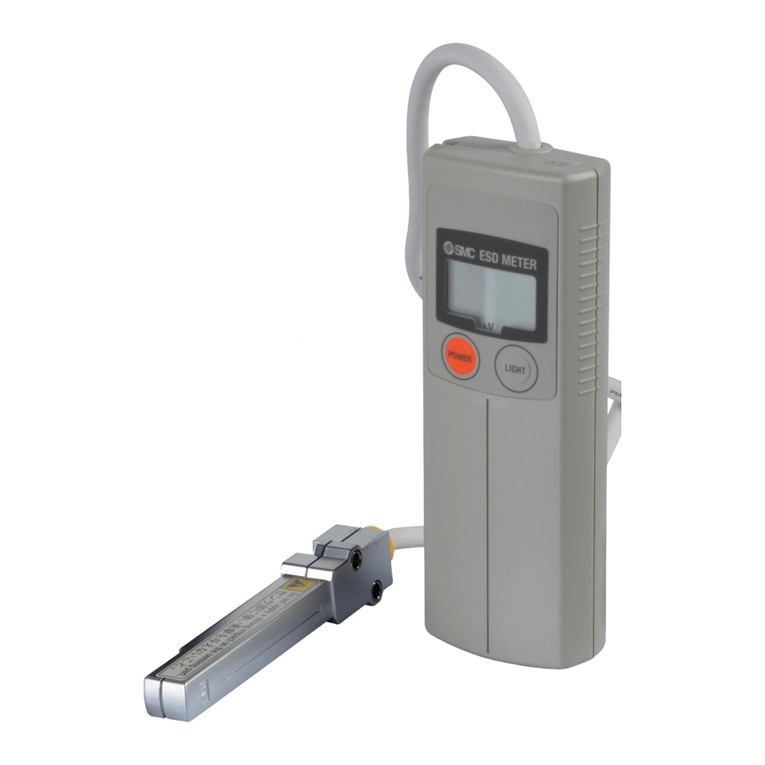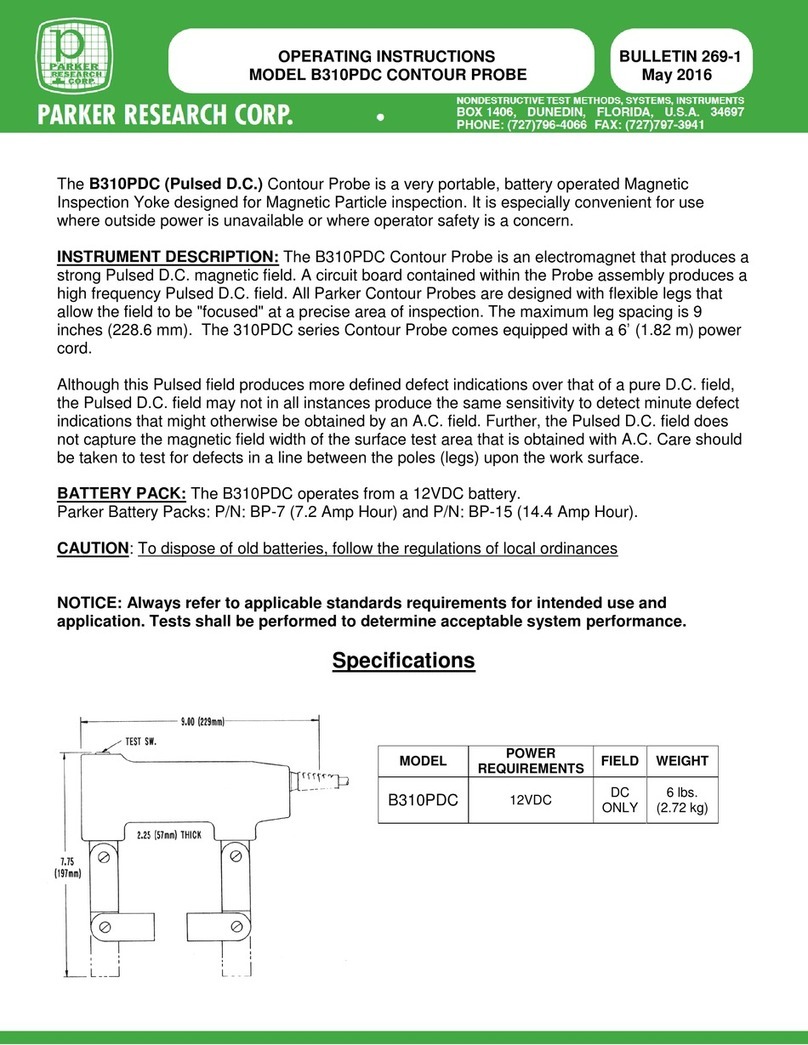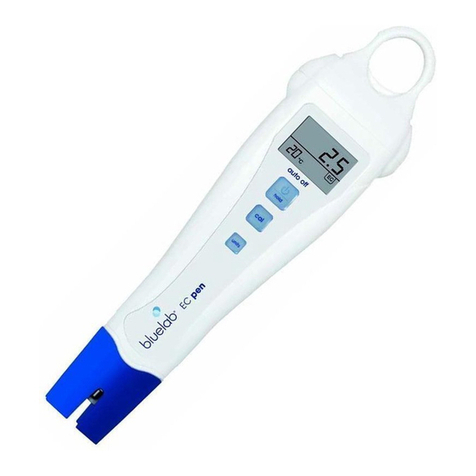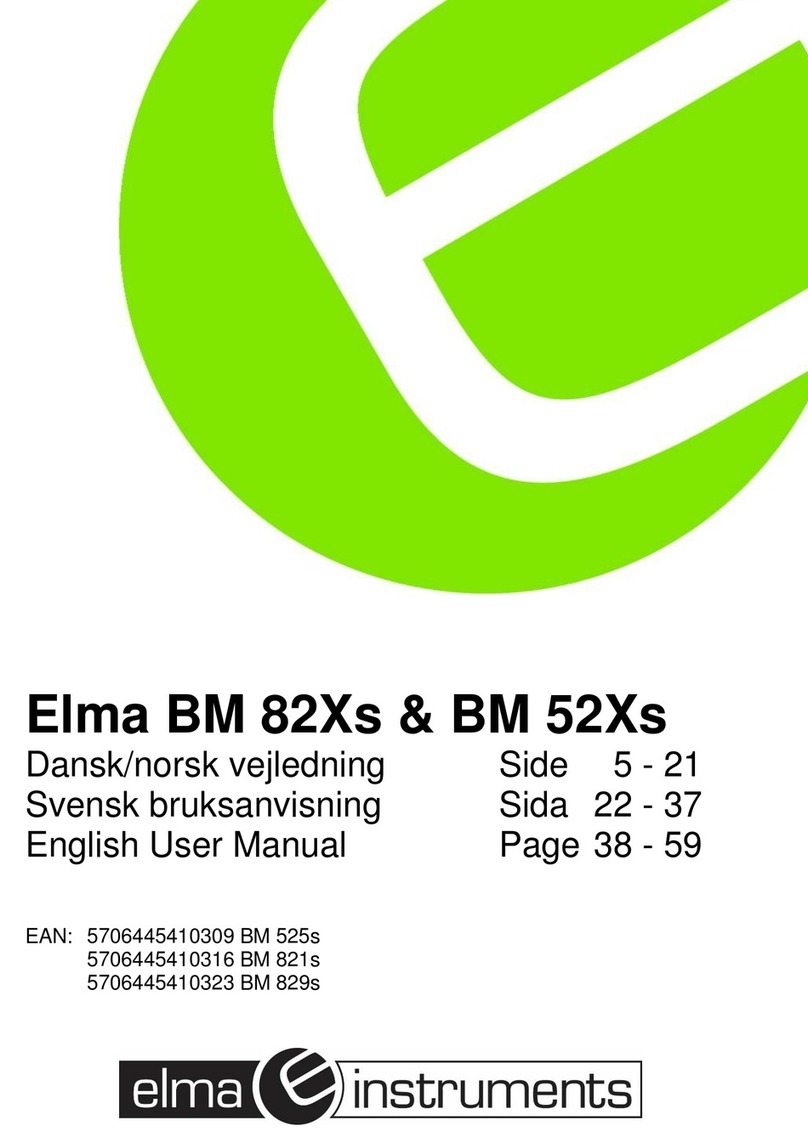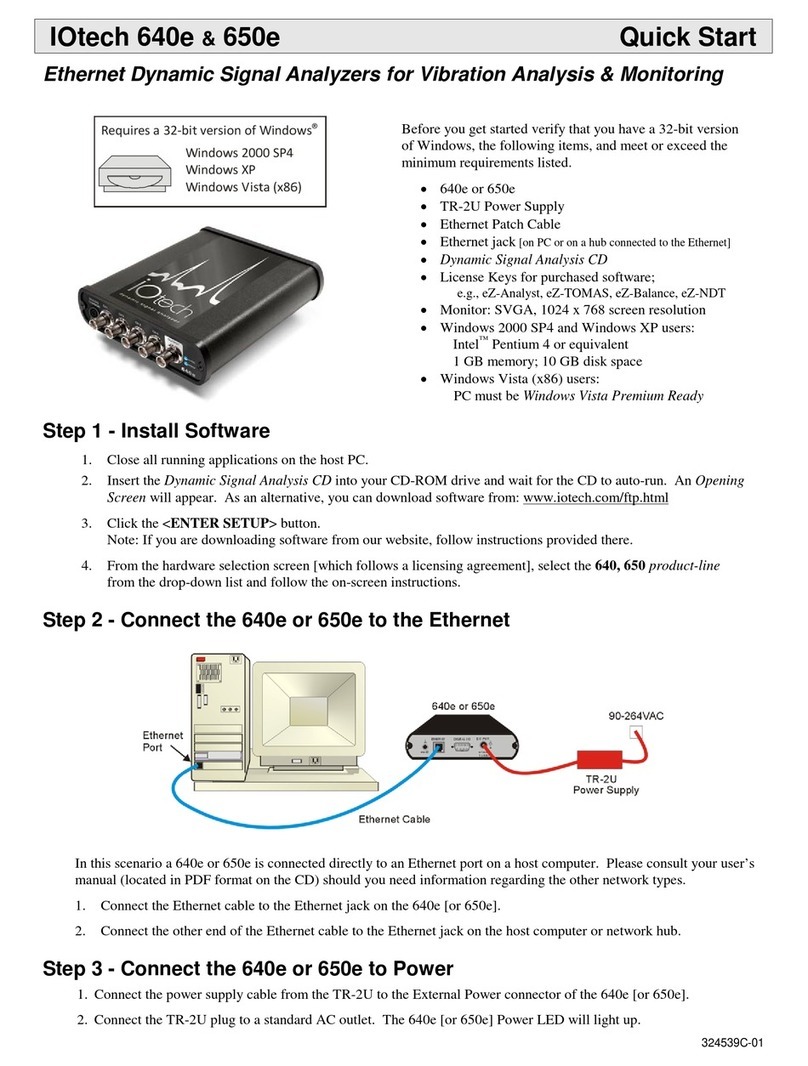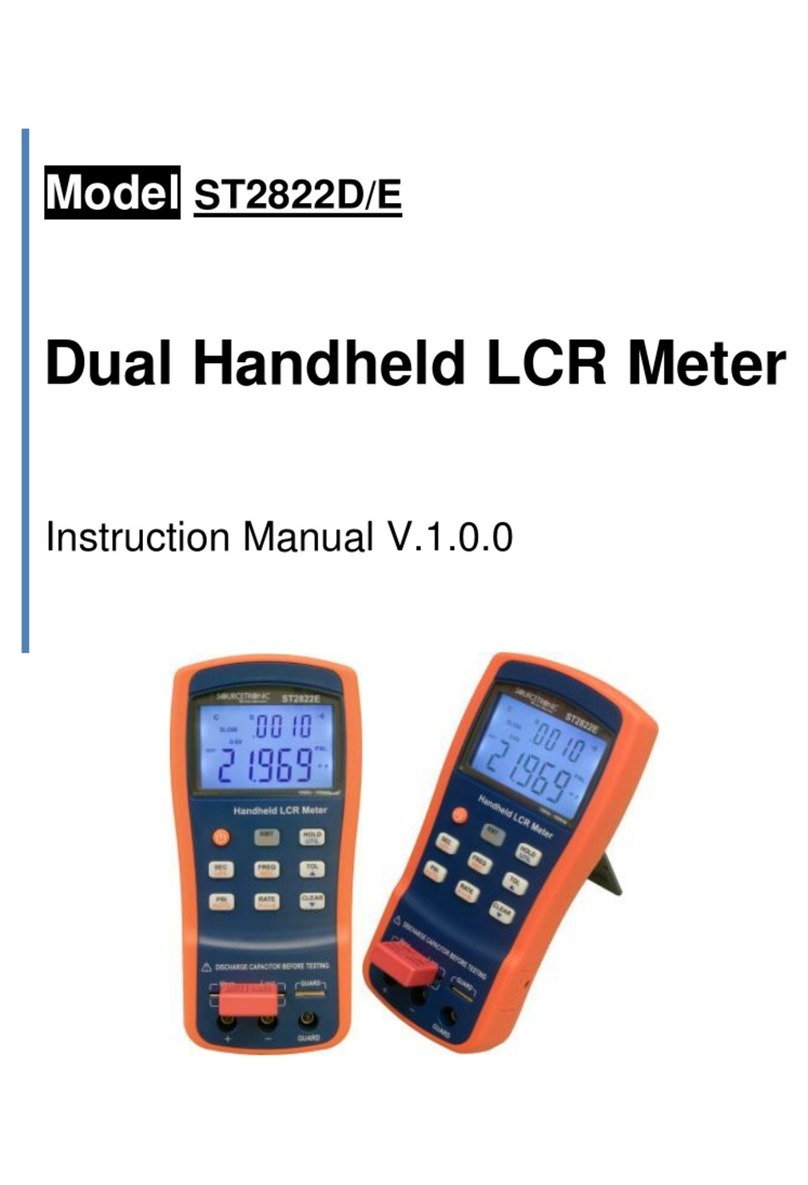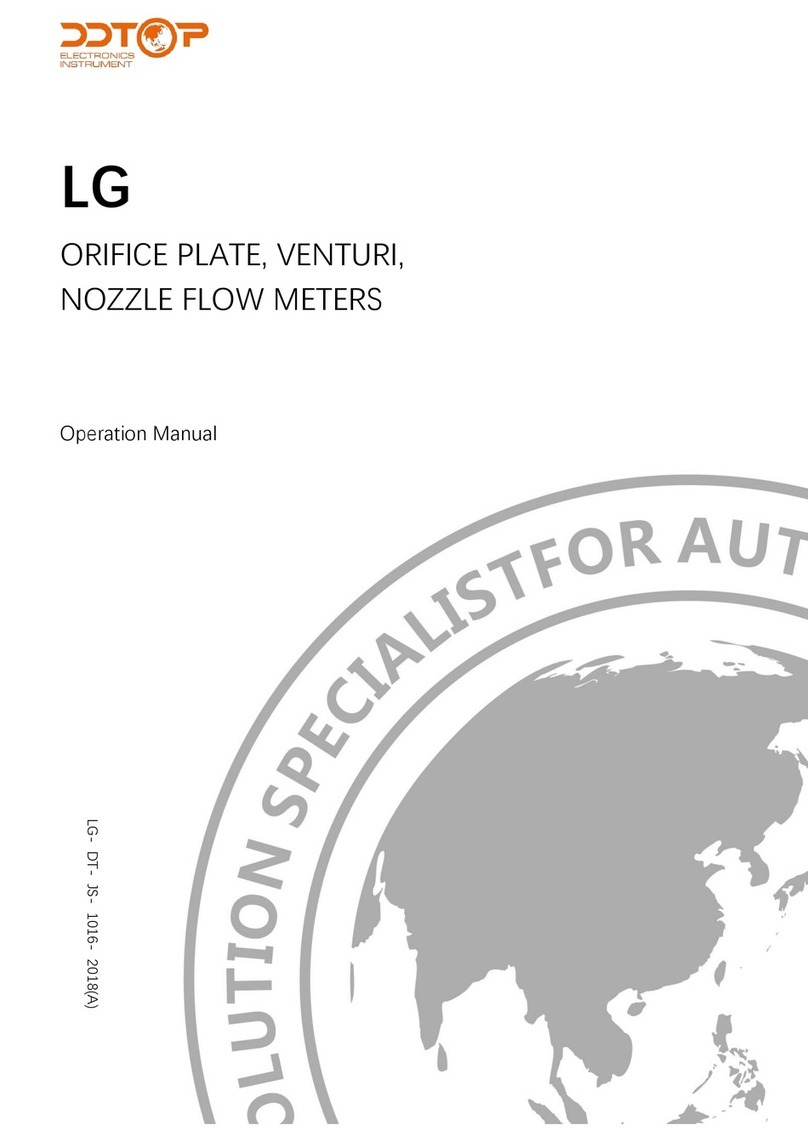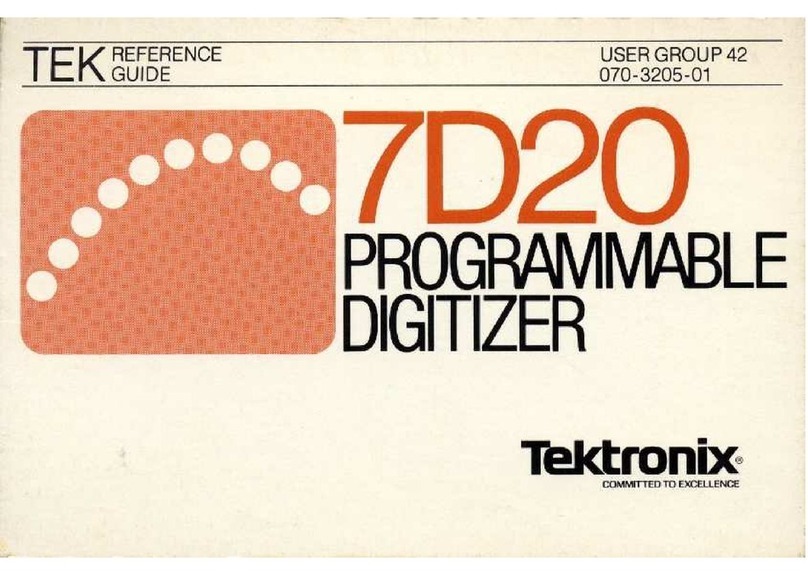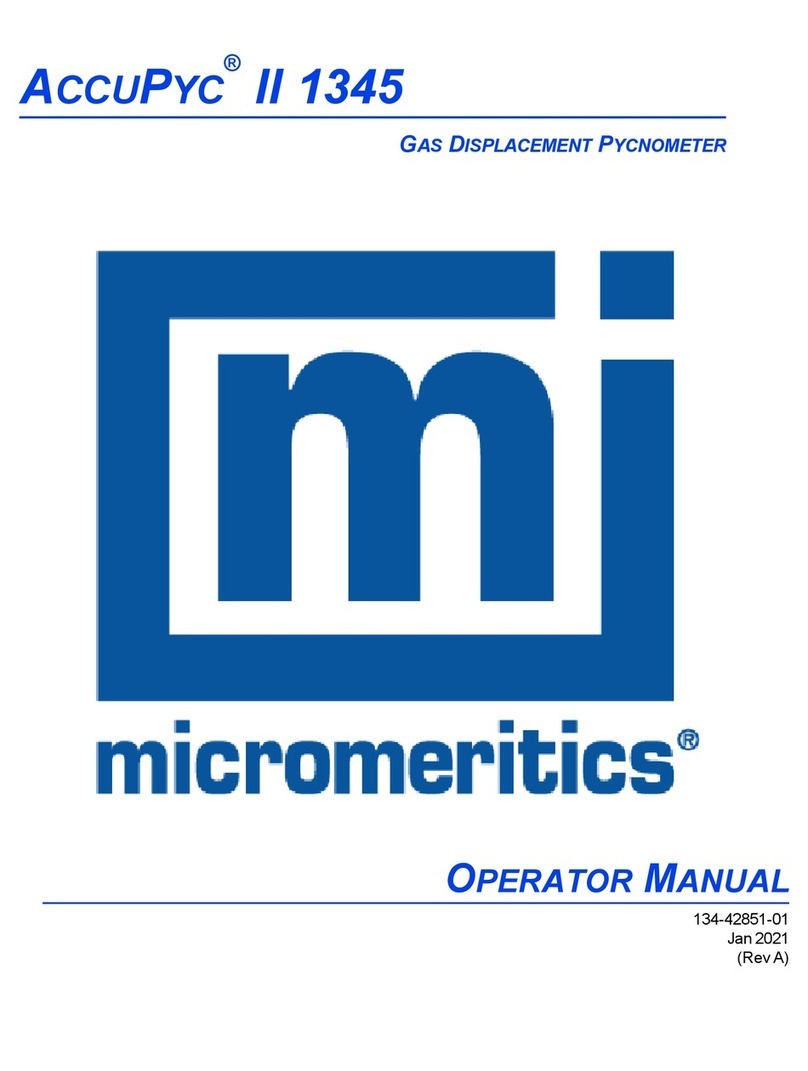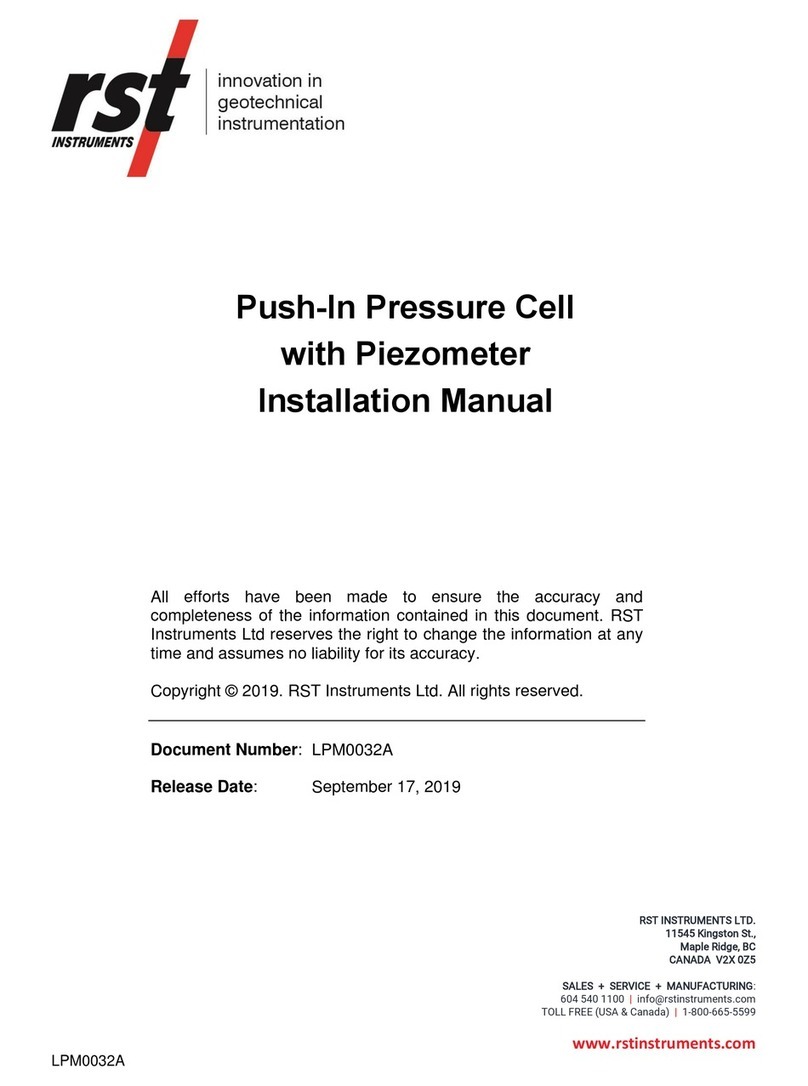SPIETH Gymnastics 1760950 User manual

Offizieller Partner SPIETH Gymnastics GmbH
In den Weiden 13 •73776 Altbach
Tel.: +49(0)7153/503 28 - 00 • Fax: +49 (0) 7153/503 28 -11
Art.Nr. 1760950
TD-Tensioning measuring device
TD-Spannungsmessgerät
TD-Dispositif de mesure de tension
EN
DE
FR
10/2021
User Manual Gymnastic cable tension control device
Gebrauchsanweisung TD-Spannungsmessgerät für
Verspannungskabel an Turngeräten
Notice d’utilisation Gymnastic cable tension control device

– 2 –
Reach the Maximum
1. Scope of delivery
2. Technical details
EN
Position Article Number Designation Number
1TD-Tensioning measuring
device 1
2 Carabiner hook No. 8 2
3 Micro USB charging cable 1
4 Mini USB charging cable 1
5 USB Power bank 1
6 Printed instruction 1
INSTRUCTION MANUAL
13
4
5
6
2
Plastic case (LxWxH): 225 x 225 x 85 mm
Weight: 1.530 kg

– 3 –
Reach the Maximum
1. Calibration and device setup
• The device must be installed by a person trained in the
installation of the apparatus on which the device is to
be mounted.
• The device mounted on a device can be used (reading of the
tension of the cable) by the gymnasts, coaches, judges or
technicians.
• The device should only be cleaned with a dry cloth, excluding
any other cleaning product that could damage the device.
Before mounting the device it must be calibrated:
• Lay the device flat without exerting any tension on the hooks.
• Press the button 1x to start the device.
• Press the button for 5 seconds until the following message is
displayed:
"release and quickly press on the button for calibration"
• Release the button then immediately press quickly the button
again to enter the calibration mode. The following message is
displayed:
"calibration mode in progress check that the load is at zero"
The operation takes less than 5 seconds.
You can now connect your device to the tension.
2. Use
To turn on the device, press the button.
The cable tension is displayed for 5 seconds then the displayed is
turned off.
The device gives the tension in Newton a range from 0 to 10.000
with increments of 100.
If the cable tension is less than 1.000 or greater than 5.000 the
LED flashes for 10 seconds.
For your own safety: use the apparatus only when the cable
tension is in the range of 1.000 to 5.000 N.
NOTE: When the device is powered through its USB
connector, the display remains active permanently.
If the unit is not used for 3 months or more, charge the
unit before using again until the display indicates that char-
ging is complete.
The device must be removed from the equipment once a year, in
order to do the zeroing procedure.
Flashing light
(flashes at too low
or too high tensioning)
Start button
Display of the battery level +
Display of the voltage in N.
EN
5V DC - 1A

– 4 –
Reach the Maximum
3. Battery
When the device is turned on, the battery level appears at the top
of the display.
The battery level should be checked regularly when using the
device. The battery pictogram
The battery level should be checked regularly when using the
at the top right of the screen
shows the battery level.
If the battery is low, the lower line of the display indicates "Low
battery". The device must be recharged through its USB
connector on the side of the device.
ATTENTION: The device may only be charged with a USB
charger with a maximum voltage of 5 V dc.
When the device is charging, the display indicates "Charging bat.".
When the battery reaches its maximum charge, the display will
show "Bat. charged".
NOTE: As an indication, as part of a regular use of the
device, it must be recharged approximatively every 6 months
(depending of using).
NOTES
All external circuits connected to your product must be of
type SELV (Safety Extra Low Voltage) and be Limited Power
Sources within the meaning of Sections 2.2 and 2.5 of the Stan-
dards IEC60950-1:2005+/A1:2010+/A2:2013 et EN60950 1:2006+/
A11:2009+/A1:2010+/A12:2011+/A2:2013-§§5.4.2 b)
The displayed voltage value is only valid for voltages below
10000 N. Beyond that, the displayed value is not significant.
Given that it is recalled that the device must not be used on a
cable whose voltage exceeds 10.000 N.
This is a product only for:
• Use indoor and in a non-humid area.
• Use in max. altitude 2.000 m
• Ranges of temperature and humidity in
> use/ storage and transport: Temperature from 5°C to 40°C;
> maximum relative humidity of 80% for
temperatures up to 31°C
> linear decrease up to 50% / relative humidity at 40°C.
• Anticipated degree of pollution: 2
In case of malfunction contact SPIETH Gymnastics GmbH
(contact details see 1. page)
EN

– 5 –
Reach the Maximum
1. Lieferumfang
2. Technische Details
DE
Position Artikelnummer Artikel Anzahl
1 TD-Spannungsmessgerät 1
2 Karabinerhaken Nr. 8 2
3 Micro USB Ladekabel 1
4 Mini USB Ladekabel 1
5 USB Power Bank 1
6 Gebrauchsanweisung 1
Kunststoffkoffer (LxBxH): 225 x 225 x 85 mm
Gewicht: 1.530 kg
GEBRAUCHSANLEITUNG
13
4
5
6
2

– 6 –
Reach the Maximum
3. Kalibrierung und Geräteeinstellung
• Das TD-Spannungsmessgerät muss von einer Person installiert
werden, die in der Installation des Turngerätes geschult ist,
auf dem das TD-Spannungsmessgerät montiert werden soll.
• Das TD-Spannungsmessgerät, das an einem Turngerät
montiert ist, kann von Turnern, Trainer, Kampfrichern oder
Monteuren verwendet werden (Ablesen der Spannung des
Spannkabels).
• Das TD-Spannungsmessgerät sollte nur mit einem trockenen
Tuch gereinigt werden, verwenden Sie kein Reinigungsmittel,
die das Gerät beschädigen könnten.
Stellen Sie sicher, dass das Gerät kalibriert ist, bevor Sie es an
einem Spannkabel befestigen:
• Legen Sie das Gerät flach hin, ohne dabei Spannung auf die
Aufhängung zu bringen.
• Drücken Sie die Taste zunächst 1x um das Gerät zu starten.
• Drücken Sie den Knopf für 5 Sekunden bis die folgende
Mitteilung erscheint:
"release and quickly press on the button for calibration"
(“Entlasten Sie den Knopf und drücken ihn dann schnell zur
Kalibrierung“)
• Entlasten Sie den Knopf um ihn umgehend wieder zu drücken
um in den Kalibrierungsmodus zu gelangen. Die folgende
Mitteilung wird angezeigt:
"calibration mode in progress check that the load is at zero"
(“Kalibrierungsvorgang in Bearbeitung, Überprüfen Sie dass die
Belastung bei 0 ist“)
Der Vorgang dauert weniger als 5 Sekunden.
Sie können nun Ihr Gerät mit der Verspannung verbinden.
4. Nutzung
Drücken Sie den Knopf um das Gerät einzuschalten.
Die Spannung auf dem Kabel wird für 5 Sekunden angezeigt,
danach schaltet sich der Bildschirm aus.
Das Gerät stellt die Kabelspannung in Newton und in einem
Bereich von 0 bis 10.000 in 100er Schritten dar.
Ist die Kabelspannung geringer als 1.000 N und höher als 5.000 N,
blinkt die LED Leuchte für 10 Sekunden auf (siehe Bild).
Zur eigenen Sicherheit sollte das Gerät ausschließlich mit
einer Kabelspannung zwischen 1.000 und 5.000 N verwendet
werden.
ANMERKUNG: Wird das Gerät mithilfe des USB-Anschlusses
aufgeladen, bleibt dabei der Bildschirm permanent
angeschaltet.
Das TD-Spannungsmessgerät muss einmal jährlich vom Turngerät
entfernt werden, um die Kalibrierung zu vorzunehmen.
DE
LED Leuchte
(Leuchtet auf, wenn die
Spannung zu hoch oder
gering ist)
Startknopf
Anzeige des Akkustandes +
Anzeige der Spannung in N.
5V DC - 1A

– 7 –
Reach the Maximum
5. Batterie
Wenn das Gerät eingeschaltet wird, erscheint der Ladestand der
Batterie oben rechts im Bildschirm.
Der Batteriestand sollte bei der Verwendung des Geräts
regelmäßig überprüft werden. Das Batteriepiktogramm
Der Batteriestand sollte bei der Verwendung des Geräts
oben
rechts auf dem Bildschirm zeigt den Batteriestand an.
Ist der Batteriestand niedrig, wird am unteren Rand des
Bildschirms "Low battery" (“Niedriger Batteriestand”) angezeigt.
Das Gerät muss dann mithilfe des USB Anschlusses an der Seite
des Gehäuses wieder aufgeladen werden.
ACHTUNG: Das Gerät darf nur mit einem USB-Ladegerät mit
einer maximalen Spannung von 5 V dc geladen werden.
Während das Gerät geladen wird, zeigt der Bildschirm
"Charging bat." („Batterieaufladung”)
Ist die Batterie voll aufgeladen, erscheint auf der Anzeige "Bat.
charged"; (Batterie aufgeladen).
ANMERKUNG: Bei üblicher Nutzung des Gerätes muss es
ungefähr alle 6 Monate aufgeladen werden (abhängig von der
Nutzung).
Wenn das Gerät 3 Monate oder länger nicht verwendet wird, laden
Sie das Gerät vor der erneuten Verwendung vollständig auf
(bis das Display anzeigt, dass die Aufladung abgeschlossen ist).
DE
WEITERE HINWEISE
Alle externen Schaltungen, die an Ihr Produkt angeschlossen
sind, müssen vom Typ SELV (Versorgung mit Schutzklein-
spannung) und begrentzen Stromquellen sein, im Sinne der Ab-
schnitte 2.2 und 2.5 der Normen IEC60950-1:2005+/A1:2010+/
A2:2013 et EN60950 1 +2006+/A11:2009+/A1:2010+/A12:2011+/
A2:2013-€5.4.2 b).
Der angezeigte Spannungswert gilt nur für Spannungen
unter 10.000 N. Darüber hinaus ist der angezeigte Wert
nicht signifikant. Wie weisen darauf hin, dass das Gerät nicht an
einem Spannkabel verwendet werden darf, dessen Spannung
10.000 N überschreitet.
• Dies ist ein Produkt ausschließlich für den Innenbereich, die
Umgebung darf nicht feucht sein.
• In einer Höhe von max. 2.000 m verwenden.
• Temperaturbereiche und Luftfeuchtigkeit
> Verwendung/ Lagerung und Transport:
Temperatur von 5°C bis 40°C;
> Maximale relative Luftfeuchtigkeit von 80% für
Temperaturen bis 31°C
> Lineare Abnahme bis zu 50 % relative Luftfeuchtigkeit
bei 40°C.
• Voraussichtlicher Verschmutzungsgrad: 2
Im Falle einer Störung wenden Sie sich bitte an SPIETH Gymnas-
tics. (Kontaktdaten siehe Titelseite)

– 8 –
Reach the Maximum
1. Contenu de la livraison
2. Détails techniques
FR
Rep Référence Désignation matières Qté
1 TENSIOMÈTRE 1
2 MAILLONS N°8 2
3 CÂBLE MICRO USB 1
4 CÂBLE MINI USB 1
5 CHARGEUR USB 1
6 NOTICE DE MONTAGE 1
NOTICE DE MONTAGE
Boîtier en plastique (LxIxH): 225 x 225 x 85 mm
Poids: 1.530 kg
13
4
5
6
2

– 9 –
Reach the Maximum
1. Mise à zéro et mise en place de l’appareil
Il convient de faire installer cet équipement par une personne qua-
lifiée, apte au montage de l’agrès et de son haubanage.
L’usage de cet équipement à des fins autres que celles initialement
prévues (mesure de la tension d’un câble) est exclu.
Une fois son montage correctement réalisé, il peut être utilisé par
les installateurs, les gymnastes, les entraîneurs et les juges. Avant
de monter l’appareil sur un câble, assurez-vous de la calibration de
l’appareil.
Cet appareil doit être uniquement nettoyé à l’aide d’un chiffon sec,
à l’exclusion de tout autre produit de nettoyage qui
pourrait l’endommager.
Pour effectuer la mise à zéro :
• Poser l’appareil à plat sans exercer aucune tension sur les
accroches.
• Appuyez d'abord sur le bouton 1x pour démarrer l'unité.
• Appuyer sur le bouton pendant 5s jusqu’à ce que le message
suivant s’affiche :
"release and quickly press on the button for calibration"
(“relâcher et appuyer rapidement sur le bouton de calibrage“)
• Relâcher le bouton puis réappuyer immédiatement sur le bouton
pour entrer dans le mode de calibration. Le message suivant
s’affiche :
"Calibration mode in progress check that the load is at zero"
(“mode étalonnage en cours vérifier que la charge est à zéro")
L’opération prend moins de 5 secondes.
Vous pouvez ensuite connecter votre appareil sur un câble pour en
mesurer la tension.
2. Utilisation
Pour allumer l’appareil, appuyez sur le bouton. La tension du câble
s’affiche pendant 5 secondes puis l’appareil s’éteint.
La tension est indiquée in Newton et dans une plage de 0 à 10.000,
par pas de 100.
Si la tension du câble est inférieure à 1.000 N ou supérieure à
5.000 N, la LED clignote pendant 10 secondes.
L’agrès ne doit alors pas être utilisé : pour votre sécurité, la
tension des câbles doit comprise dans la plage de 1.000 N à
5.000 N.
NOTE : Lorsque l’appareil est alimenté via son port USB, l’affi-
chage reste actif en permanence.
Le tensiomètre doit être démonté de la câblerie une fois par an
minimum, afin de renouveller la «Mise à zéro»
FR
LED d’alerte (clignote si la
tension du câble est trop
élevée ou trop basse)
Bouton Démarrer
Affichage du niveau de charge
de la batterie +
Affichage de la tension en N.
5V DC - 1A

– 10 –
Reach the Maximum FR
3. Batterie
Lorsque l’appareil est allumé, le niveau de batterie apparait en haut
de l’écran.
Si la batterie atteint un niveau de charge insuffisant, la ligne infé-
rieure de l’écran indique "Low battery". L’appareil doit alors être
rechargé via le port USB situé sur le côté de l’appareil.
ATTENTION :L'appareil ne doit être chargé qu'avec un
chargeur USB d'une tension maximale de 5 V dc.
Lorsque la batterie est en charge, l’écran affiche "Charging bat.".
Lorsque la batterie atteint sa charge maximale, l’écran affiche
"Bat. charged".
Lorsque l’appareil est allumé, le pictogramme « » de niveau de
charge de la batterie apparait en haut à droite de
l’écran. Il doit être contrôlé régulièrement avant chaque utilisation.
La zone noire présente dans ce pictogramme définit
le niveau de charge de la batterie.
NOTE : A titre indicatif, dans le cadre d’un usage régulier de
l’appareil, l’appareil doit être rechargée environ tous les 6
mois (selon l’usage.
Si l’appareil n’est pas utilisé pendant une durée de 3 mois ou plus,
mettre en charge l’appareil avant une nouvelle utilisation
jusqu’à ce que l’écran indique que la charge est terminée.
NOTES :
Tous les circuits externes connectés à l’appareil doivent
impérativement être de type TBTS (Très Basse Tension de
Sécurité) et être des Sources à Puissance Limitée conformément
aux normes relatives aux appareils de traitement de l’information:
«IEC60950-1:2005+/A1:2010+/A2:2013-§2.2 et 2.5» et
«EN60950 1:2006+/A11:2009+/A1:2010+/A12:2011+/A2:2013-§2.2 et
2.5
L’appareil est destiné à être utilisé sur des câbles dont
la tension en utilisation n’excède pas 1 Tonne
(Affichage: 10.000 N). Au-delà, la valeur affichée n’est pas significa-
tive.
Cet appareil doit être uniquement nettoyé à l’aide d’un chiffon sec,
à l’exclusion de tout autre produit de nettoyage qui
pourrait l’endommager
Conditions générales de transport, de stockage et d’utilisa-
tion :
L’appareil fonctionne correctement dans les conditions suivantes :
-- En intérieur dans une zone non humide,
-- A une altitude maximale de 2.000 m,
-- Lorsque la température est comprise entre entre 5 et 40°C,
-- Avec un taux d’humidité relatif maximal de 80% pour des tem-
pératures ≤ 31°C,
puis décroissant jusqu’à 50% à 40°C.
-- Son degré de pollution est prévu en P2, ce qui correspond à un
dépôt d’une pollution sèche non conductrice (comme la magnésie),
mais ou on peut s’attendre à une conduction temporaire par suite
de condensation (comme la sueur).
Contacter SPIETH Gymnastics à l’aide des coordonnées en en-tête
de la première page.

– 11 –
Reach the Maximum DE
EN
FR
DE
Die CE-Kennzeichnung bestätigt die Konformität eines Erzeugnis-
ses mit den in den Europäischen Richtlinien nach der Neuen Kon-
zeption festgelegten grundlegenden Anforderungen. Europäische
Richtlinien nach der Neuen Konzeption verweisen auf harmonisierte
Europäische Normen, welche technische Lösungen anbieten, die
die Unternehmen bei der Einhaltung der Richtlinie unterstützen.
Für die Anbringung der CE-Kennzeichnung ist der Hersteller, der
Inverkehrbringer oder sein Beauftragter in der EU zuständig. Die
CE-Kennzeichnung dient der Information offizieller Stellen, wie den
Gewerbeaufsichtsämtern in den EU-Ländern, denen sie die Kont-
rolle über die zulässige Vermarktung der Erzeugnisse erleichtert.
Das CE-Kennzeichen ist somit eine Art Reisepass für Produkte
im europäischen Binnenmarkt und stellt kein Qualitätszeichen dar.
Es richtet sich nicht an den Endverbraucher. Hier gelten andere
Zeichen wie z. B. das Siegel für geprüfte Sicherheit: GS.
Die CE-Kennzeichnung wird nicht von der DIN betreut. Eine wich-
tige Informationsquelle für die CE-Kennzeichnung ist das Offizielle
Register der benannten Stellen NANDO. In diesem Register findet
man zum Beispiel alle autorisierten Stellen in Deutschland zur
Vergabe der CE-Kennzeichnung mit Angabe der EU-Richtlinie, für
welche die Autorisierung gilt.
EN
CE marking demonstrates compliance with EU legislation (such as
New Approach Directives). It is to be applied by the manufactu-
rer or his/her representative. Some directives require conformity
assessment by a neutral third party, called a "notified body", before
the marking can be applied.
By applying the CE marking a manufacturer declares - on his/her
sole responsibility - that the product meets all the legal require-
ments and can thus be placed on the EEA market. It should be no-
ted that the CE marking is not a quality mark, nor does it indicate
that the product was made in Europe. As such, it is not intended
for the end consumer. Other marks are used to indicate quality,
such as the German "safety tested" seal ("GS" mark). DIN plays no
role in applying the CE mark.
A list of all "notified bodies" for each New Approach Directive is
available at the NANDO (New Approach Notified and Designated
Organisations) website.
FR
Conformité Européenne aux exigences en matière de santé, de
sécurité, de rendement et de protection de l’environnement relati-
ve aux normes
et directives en vigueur s’appliquant à cet appareil (cf. § Conformi-
té page 1).
DE
Elektro und Elektronikgeräte dürfen nicht über den Hausmüll ent-
sorgt werden.
EN
Electrical and electronic equipment must not be disposed of via
household waste.
FR
indique que le produit ne peut être traité comme un
déchet ménager. Il doit plutôt être remis au point de ramassage
concerné, se chargeant du recyclage du matériel électrique et
électronique. En vous assurant que ce produit est éliminé correc-
tement, vous favorisez la prévention des conséquences
négatives pour l’environnement et la santé humaine qui, sinon,
serait le résultat d’un traitement inapproprié des déchets de ce
produit. Pour obtenir plus de détail sur le recyclage de ce produit,
veuillez prendre contact avec le bureau municipal de votre région,
votre service d’élimination des déchets ménagers ou
votre revendeur.
Table of contents
Languages:
Popular Measuring Instrument manuals by other brands
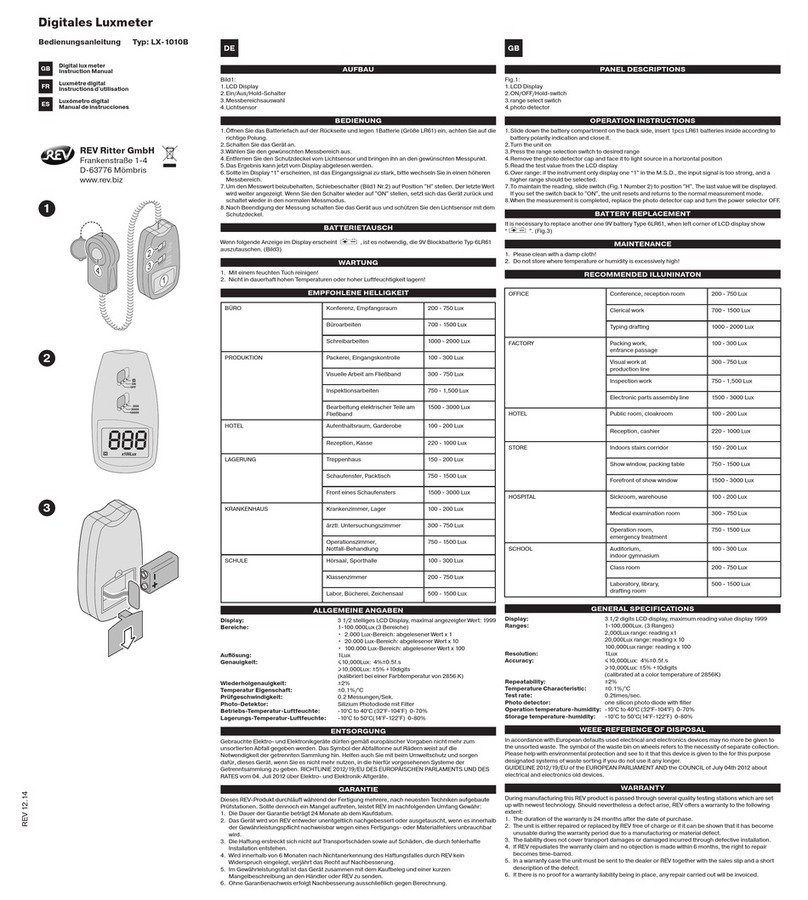
REV Ritter
REV Ritter LX-1010B instruction manual

Ferraris Respiratory
Ferraris Respiratory eSense PiKo user manual

Hanna Instruments
Hanna Instruments HI 9811-5 instruction manual
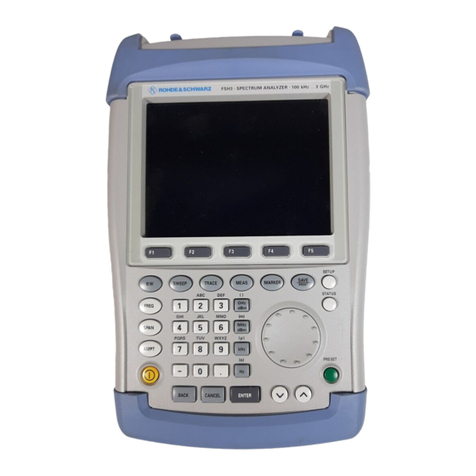
Rohde & Schwarz
Rohde & Schwarz R&S FSH Series operating manual
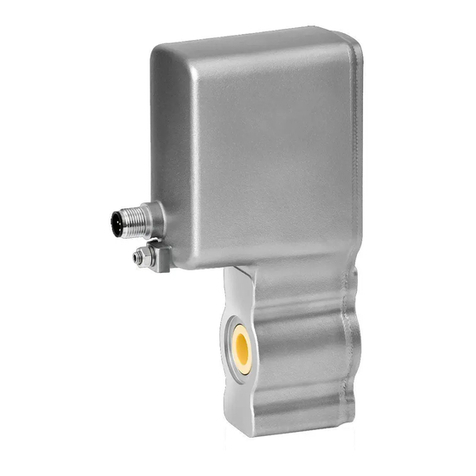
KROHNE
KROHNE BATCHFLUX 5500 C quick start
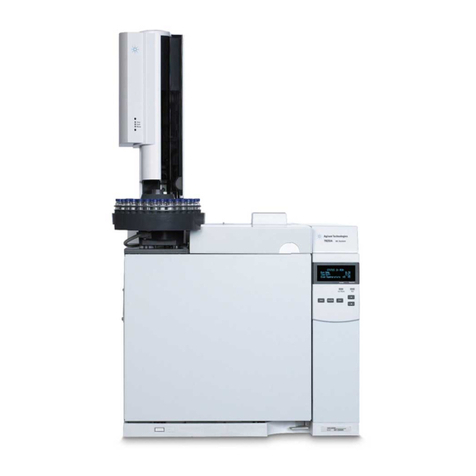
Agilent Technologies
Agilent Technologies 7820A Safety manual
